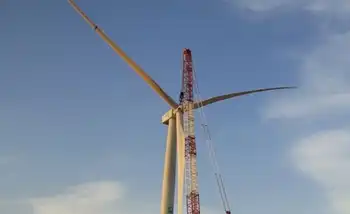The dark underbelly of new technology
By Information Management
CSA Z463 Electrical Maintenance -
Our customized live online or in‑person group training can be delivered to your staff at your location.

- Live Online
- 6 hours Instructor-led
- Group Training Available
On the surface, it doesn't seem so bad - they aren't belching pollution while we use them and they don't seem to be creating medical problems for their users (except for strained eyes and hands and perhaps for some the obsessive need to always be connected).
There are some serious considerations for companies to make related to the environmental and associated financial impact of using information and communications technology:
• According to the environmental protection agency, data centers consume more than 1.5 percent of the electricity used in the U.S., and this consumption is growing at more than 12 percent per year;
• Energy cost is a growing and dominant factor in overall IT spending. A recent analyst report estimates that the cost of energy for running IT and related equipment will reach nearly 50 percent of the overall IT budget in the next few years;
• For many service sector companies, data centers are the largest source of greenhouse gases, according to a McKinsey study;
• Additionally, the vast majority of IT equipment is not recycled and is being discarded as e-waste and releasing toxins into the environment. Prominent technology company logos have been found in landfills and the ocean. The EPA has determined that only 13 percent of electronics equipment is actually recycled, according to the "State of Green Business 2010" report.
Despite these concerns, information and communication technology can be used in ways that are beneficial for the enviroment, such as helping companies track information about the environmental and related financial impact of their activities - allowing them to find ways to continuously improve.
In a typical data center, for every one watt of electricity consumed by a device (such as a server) an additional 1.84 watts are consumed through cooling, uninterruptible power supplies, power distribution, AC/DC transformations, etc. Reducing the actual consumption of the end use devices can have a significant multiplying effect.
Eliminate unused equipment. A survey by the Alliance to Save Energy found that IT departments are currently wasting money and energy running unused servers. They estimate that at least 15 percent of servers that are powered on are doing no useful work. Finding these and eliminating them or repurposing this equipment before buying any new servers can have an immediate impact on your energy use - not to mention the cost savings from avoiding the purchase of new equipment.
Virtualization can also help to reduce energy consumption, because it allows you to use your existing server and storage equipment to the greatest extent - enabling you to more fully max out the equipment you are already running - before you get more.
When you do need to purchase new servers and storage, require that the equipment purchased is ENERGY STAR or EPEAT certified. This will ensure that you are using the most energy efficient equipment possible.
To start, you should assess whether you have opportunities to eliminate some of your data centers and consolidate to a smaller number of locations. The fewer facilities you operate, the better. The actual location of the data center is an important consideration as well. Look for locations that require less energy because they are naturally cooler environments.
When constructing a new data center, consider "green" building techniques that help you conserve energy in a way that's appropriate for your climate and location - such as rooftop vegetation ("green roof"), natural ventilation/fresh air cooling, insulating windows, added insulation, lighting from the sun, LED lighting and highly efficient air cooling techniques.
Reducing the density of your equipment (how tightly it's packed together) can also lower the cooling burden and allow for targeted cooling at particularly hot spots - as opposed to cooling the whole space uniformly.
Recycling waste heat from your data center to more useful purposes can also help you to reduce your overall facilities energy use and related carbon footprint. Waste heat can be recovered and used to heat offices, water or even used by other neighboring residential or commercial properties.
You may be surprised to find that major IT equipment vendors will warranty their servers at much higher temperatures than you run in your data center. Investigate to see if you can raise the temperature to reduce cooling needs.
Most pieces of equipment in a traditional data center receive AC power, but then convert it to DC for use by the device. This generates heat and results in a loss of power due to the conversion. If you do this conversion to DC for the whole data center, it results in less power loss (20 to 30 percent improvement) and less heat being generated (20 to 40 percent improvement). This is a good option to consider when building a new data center due to this two-part benefit.
Another major power-related piece of equipment in a data center is the UPS. Look for the most efficient UPSs - these will have a lower total cost of ownership due to the lower energy usage, even though their initial costs may be higher.
Additionally, the use of special purpose capacitors to increase power quality can reduce the electricity consumption of major equipment or an entire facility by up to 15 percent.
There are other considerations related to green IT such as powering with alternative energy sources, performing ongoing monitoring and management of energy usage, looking at the full lifecycle environmental impact of your equipment and proactively recycling equipment.
Additionally, IT can be part of the environmental sustainability solution for the whole business by leveraging IT and communications technology to reduce travel and paper waste, and by providing business applications to manage your company's processes in a more environmentally friendly manner. I'll cover these topics in future articles in this series.











